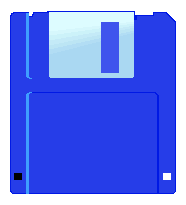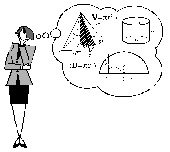

To improve your reading and writing skills, you should read and write more. However, it is important for you to know reading and writing principles to be effective. Likewise, to improve your memorization skills, you should read and write more, but it is prudent to know memory principles to be effective.
This guide illustrates principles that can help you to improve your memorization skills. As an added benefit, not only can these principles work for your in class, but they can also work in other areas of study.
Suggestions and tips in this chapter can be used as a foundation for all other chapters:
Using these suggestions and tips set the stage for principles and techniques in upcoming chapters.
PRINCIPLE: Make a conscious, determined effort to learn new concepts.
This principle is the first and most important in learning. If you do not master this principle, most of the others may be in vain.
Procedures for making a conscious, determined effort to learn:

When reading, STOP and TAKE NOTE of the concepts you want to learn.
Make a conscious effort to learn those concept(s).While these procedures may seem easy, most students read without ever making a conscious, determined effort to learn. They may have learned a few popular concepts because they have heard them for years (I before e except after c…, for example). This technique is called repetition, and it is the least effective and most time-consuming of all memory techniques.
The following scenarios illustrate the idea of making a conscious effort by purposing in your heart:
This idea can be compared to a bookmark. You use a bookmark when you want to mark a particular place in a book. When you return, you can readily go to that spot without having to take additional time to remember where you stopped. Likewise, when you get out of your vehicle and walk away, you can “mark your spot” by making a “mental bookmark” so when you return you can use your “mental bookmark” to assist you in finding the place you parked.
The following exercise further illustrates this principle:
Who picture is on the following bills?
If you know the answers, you made a conscious effort to remember them at one point. If you do not know the answers, you did not make a conscious effort to remember them even though you use some of them practically daily.
This idea holds true for learning new concepts as well. To learn new concepts, you need to make a conscious effort to stop and take note of the concepts you are learning before you advance to other concepts.
Many memory principles that are discussed in this guide are used to a certain degree unconsciously. This guide is designed to formalize these techniques in a more structured and systematic approach so you can become aware of your thoughts.
After you use these principles and their underlying techniques on a consistent basis with the examples given, an amazing thing will begin to happen to you. They will become a part of your thinking. They will become an unconscious reality to you. You will not have to think “long and hard” about what principles to use. You will be amazed at the times you will remember new concepts without making much conscious effort to recall principles you learned. This approach may seem like a contradiction of what was previously said about stop and take note. However, you are still stopping and taking notice but at a much faster pace.
The following three examples justify this concept:
You cannot learn effectively by simply reading. You need to stop, take note, and make a conscious effort to learn.
Your mind is a powerful tool. Unfortunately, many students have not trained their mind to be effective. Your mind can be compared to a computer or a file cabinet. It can be triggered by things you have learned or experienced in your past. In addition, your mind thinks in pictures rather than words.

Like a computer, your mind is capable of remembering whatever you store in it. Hence, you should guard what goes into your ears and eyes because they are gateways to your mind:

In a file cabinet, there are folders that should be arranged in a logical order so information can be retrieved readily. Similarly, your mind is like a huge file cabinet with various types of information in it. How well you store information in it may determines how well you can retrieve it later. If you clutter your mind like an unorganized file cabinet, you may have problems retrieving information when needed just as if you may have problems retrieving information from a “junky” file cabinet.

Your mind can also be compared to a computer diskette. There is a table on a computer diskette that is called the File Allocation Table. Its job is to set aside space for files which can be compared to a book’s table of contents. The table of contents shows where information (sections, chapters, and pages) is located. Similarly, your mind has stored in it millions of pieces of data. How well you retrieve that information depends on how well you have setup your mind’s “File Allocation Table.” Hence, your inability to recall information may be a result of your inability to store it or your inability to retrieve it, if it is stored correctly. This guide is designed to give you techniques to improve your mental “storage and retrieval” system.
What you have learned in your past may trigger your memory on what you know now. For example, what is the first thing that comes to your mind when you think of the word trigger? For most people, it’s a gun. In fact, the word trigger sets off images in your mind.
The following exercise demonstrates this idea. What is the first definition that comes to your mind when you think of the following words?
TIDE a detergent or a wave
MUSTANG a car or a horse
XEROX® a copy or a company
GAY a homosexual or being happy
CRACK a hole in the wall or drugs
PLANE an airplane or surface plane
CROOK a thief or something that is bent
The first definition you choose for the word on the left usually depends on what you have learned in your past.
The following scenario demonstrates the principle of “triggers” in your mind:
You were cooking in the kitchen and you heard the door bell ringing. You rushed to the door to find out who was there. Your neighbor decided to visit you on a hot summer day. You started to have a conversation with him. Suddenly, your neighbor asked, “Isn’t it a hot day?” You immediately responded by saying, “I have something in the oven cooking,” the second he asked, “Isn’t it a hot day?”
What happened in this scenario is your mind was “triggered” by the key word hot to remind you that you had something hot in the oven.
This guide shows how to set “mental triggers” to:

Your mind is programmed to see pictures when you hear words. To prove this point, what happens when you hear the following words?
APPLE |
You “picture” in your mind a red (or green) apple. You do not think of the letters of the word apple––A-P-P-L-E. |
HOUSE |
You “picture” in your mind a house. You do not think of the letters of the word house––H-O-U-S-E. |
VACATION |
You “picture” in your mind you are having FUN on a vacation somewhere. |
This event can best be explained by the proverbs, “Words paint pictures.” and “A picture is worth a thousand words.”
This guide shows how to “paint” pictures in your mind to remember new concepts.
Knowing how your memory works enables you to become more aware of how to store and retrieve information from it better.
PRINCIPLE: Do whatever it takes to make learning fun and easy.
A common technique with the convenience principle is to use memory mnemonic. Mnemonic is any techniques such as association, acronyms, rhyme, etc. that helps you to remember.
The following are some techniques of this principle along with explanations and examples. The key is to develop your own techniques:
Associate what you are learning with an acronym. An acronym is a word formed from the initial letters of a name, as WAC for Women's Army Corps, or by combining initial letters of parts of a series of words, as RADAR for RAdio Detecting And Ranging.
Procedure in creating an acronym:
Below is an example of an acronym created by combining initial letters of parts of a series of words, as RADAR for RAdio Detecting And Ranging.
SCUBA – Self-contained Underwater Breathing Apparatus
Please Excuse My Dear Aunt Sally (Paragraph, Exponent, Multiplication, Division, Addition and Subtraction)
My Very Educated Mother Just Served Us Nine Pickles (Mercury, Venus Earth Jupiter Saturn Uranium, Neptune and Pluto)
FOIL – First Outer Inner and Last for quadratic equations.
Rhyme – In 1492 Columbus sailed the Ocean Blue.
Nine Times Table: Rule: 9 times any number is one less than the number it is being multiplied by that is added to a number they will make it 9:
9 x 1 = 9
9 x 2 = 18 (2 -1 = 1 and 1 + 8 = 9
9 x 3 = 27
9 x 4 = 36
Etc.
Great Lakes (HOMES) Huron, Ontario, Michigan, Eric, and Superior.
Rainbow color: Roy G. Biv (Red, Orange, Yellow, Green, Blue, Indigo, Violet)
The school principal is your pal. The principle that serves as a guideline is a rule.
Every good boy does fine: temble clep
ARITHMETIC – A Rat In Tom’s House Might Eat Tom’s Ice Cream
Circumference of circle is πr2: remember “pies aren't square, pies are round” Not to be confused with the perimeter of a circle which is: 2πr. Just move the square to (or 2) the other side and bring it down.
The steps in CPR: ABC Airway, Breathing, Circulation.
To remember the scientific method use this sentence: 7.31 (Observation, Statement, Hypothesis, Experiment, Theory)
Thirty-day hath September, April, May, and November, all the rest I cannot remember (To determine the months other than February that has 30 days).
If the definition of SUPERHUMAN is: Larger than life, Imaginary, and Emotional. Then, think of a superhuman as a LIE (from first letter of each word/phrase).
Associate (connect in your mind) what you are learning with what you already know. This technique has a twofold application. You can:
Procedures to create an association:
The association technique can also be used by linking (associating) something that is not directly related with the concept(s) you are learning. To do this, follow the procedures below:
Linking Principle – link what you are attempting to learn with a rhyme or a short sentence. Or you can link one item in a list to the next item and continue the linking to link all items together like a chain.
For example, to help me remember NOT to forget my phone, etc. when I leave my house or my office, I usually repeat a simply statement that says, “Keys, Phone, Wallet, Watch.” In fact, one day when I was saying this aloud, my youngest son said, “Dad, they are all in alphabetically order.” Something that I did not recognize.
To remind my sons of a list of chores they have to do 10-15 minutes every day, I tell them to remember, “Dishes, Clothes, Trash.”
Pattern Principle – look for a pattern or a close pattern in number to remember them.
For example, what pattern do you see in the number below:
192837 – all pair of number add up to 10 (1+9, 2+8, and 3+7)
Loci System – remember items by associating them with large appliances and furniture in your house as you traverse your house in a clockwise direction from room to room. Then take a “mental” tour of your house to recall those items.
Do not limit yourself to the principles and techniques used in this guide. One of the best ways to learn new concepts is to develop or use techniques that work best for you. The key is to make learning a fun-filled, rewarding experience with many promising results.